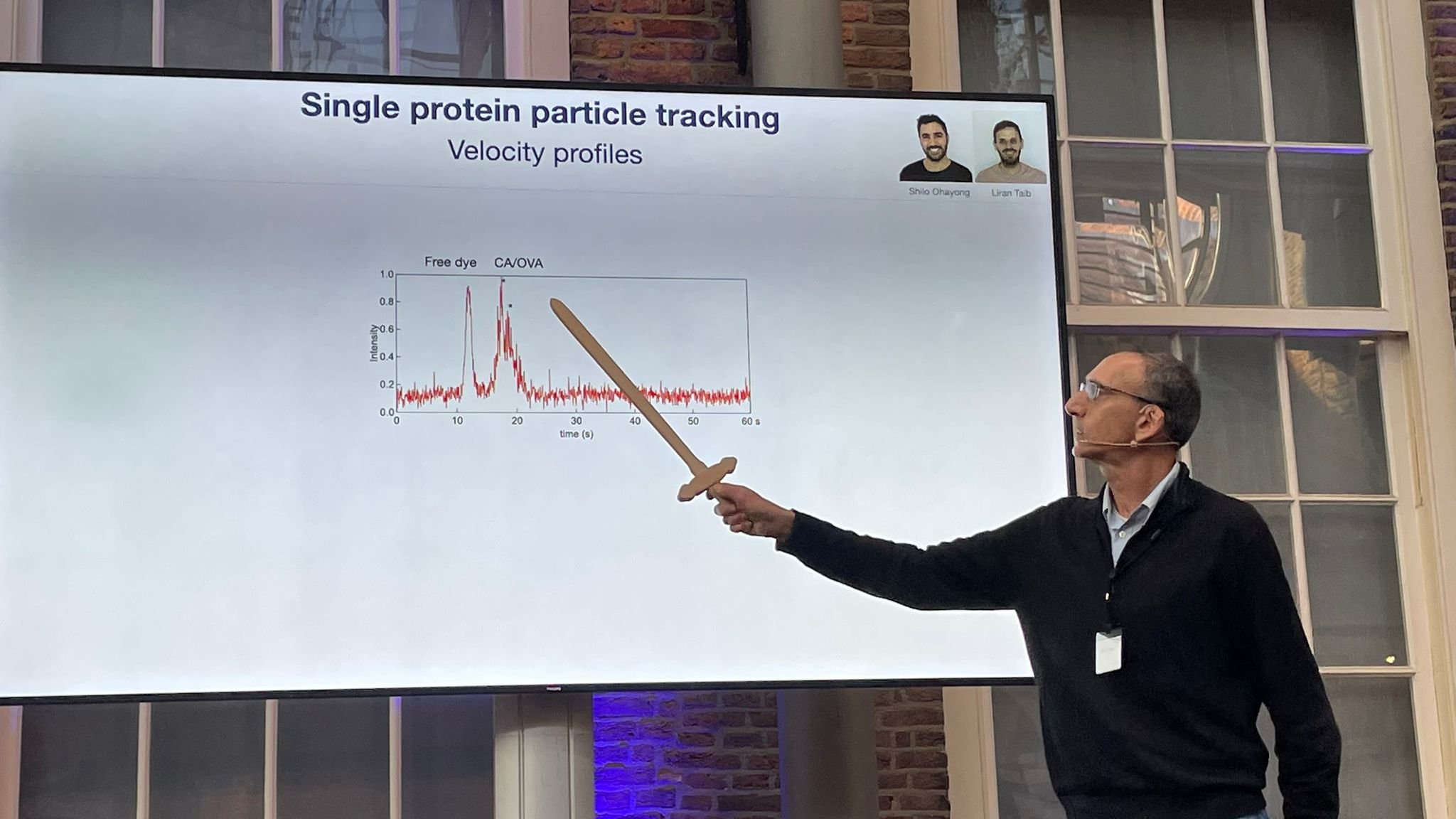Hanukkah celebration at Meller Lab
Meller lab gathered together to celebrate and light Menorah candles on the last day of Hanukka 25th of December 2022. Delicious donuts were served of course 😋
Meller lab members present at biophysics retreat
Members of Meller Lab presented research posters and talks at the Biophysics Retreat, an annual event that brings various biophysics groups together and showcases the interesting research developments across the field. The event was held in Tiberias, Israel on December, 2022.
Our lab members represented us in SMPS3 conference in Delft, the Netherlands.
Dr. Yulia Marom, Dr. Navneet Verma Chandra, Neeraj, Liran, Shilo, Noam, and Prof. Meller presented our research in single molecule sequencing. The group presented five different posters, each one on a different topic.
Meller lab won the 2022 MOST Sweden-Israel award.
Prof. Meller is among the recipients of this year’s awards - The MOST Sweden-Israel award with his colleagues at the Royal Institute of Technology, to develop novel plasmonic nanopore sensors for clinical bio molecular markers.
Our lab had some renovations and it looks good!
In the last two weeks our lab had some renovations. Our lab members took a major part of the work. here are some pictures from the painting work.
Neeraj Soni's paper on ACS Nano journal
Single-File Translocation Dynamics of SDS-Denatured, Whole Proteins through Sub-5 nm Solid-State Nanopores
In this paper we characterize the voltage dependence translocation dynamics of a wide molecular weight range of denatured proteins (from 14 to 130 kDa) through sub-5 nm solid-state nanopores, using a SDS concentration below the critical micelle concentration. Our results suggest that proteins’ translocation dynamics are significantly slower than expected, presumably due to the smaller nanopore diameters used in our study and the role of the electroosmotic force opposing the translocation direction. This allows us to distinguish among the proteins of different molecular weights based on their dwell time and electrical charge deficit.









